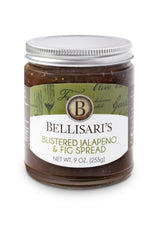If you spend a lot of time in the kitchen, like I do, it’s easy to become overwhelmed by an overstuffed fridge and a pantry that is a disaster zone. Not only does this make every cooking endeavor twice as hard as it needs to be, but having a disorganized kitchen can also make your whole house feel cluttered and untidy. Although it might seem like a huge task, getting organized doesn’t mean you have to spend an inordinate amount of time or money accomplishing this worthy goal. The truth is, there isn’t any “right” way to be organized. It’s all about creating systems that work for you. To help get you started, here are some of the ways I’ve kept organized and productive:
-
Clean Out --
-
One of the hardest parts of getting organized is simply getting started. To avoid being overwhelmed, begin with one simple task. Open the fridge and pantry and identify five items to discard. Expired condiments, old produce, and that salad dressing you bought that nobody likes are some of the items that we all have lurking around to clog up our organization. Toss them without guilt or regret; they’re just taking up space!
-
If healthy eating is a priority, use labels to decide what to toss. When you find foods containing ingredients you’re eliminating from your diet, such as high-fructose corn syrup, as well as foods that list sugar as the first or second ingredient, get rid of them.
-
Organize --
-
I like to group “like with like.” Think about how and when you use different foods and group them accordingly. If you and your family love to bake, for example, gather all those supplies and create a baking zone. This can be especially helpful for families with young children. If you establish a designated spot for kid’s snacks, they can learn to help themselves and gain independence in the kitchen.
-
Don’t shop for new containers when you’re starting a new system. Use the boxes the food came in, shoeboxes, or whatever you have on hand. Test your new system out for a few weeks, and then evaluate whether you need new storage solutions, so you don’t spend unnecessarily.
-
Make it accessible. Along with using boxes, I like repurposing trays and bowls for storage. They’re attractive and make it easy to see what I have on hand. Plus, when I mix some of my own style into my storage, like a pretty ceramic bowl I bought on vacation or a tray in my favorite color, for example—I find that I’m more likely to stick to my system.
-
If and when you invest in new storage, glass is a great option because you can see what’s inside, and it’s got staying power. Mason jars are perfect for storing grains, legumes, and other foods you buy from bulk bins. They’re pretty, and their airtight lids help keep food fresh. Keep them, and spices, in a pantry away from light and heat.
-
Larger families or those creating an entirely new system often find labeling helpful because it communicates where everything is located. You can label everything or just certain items, depending on your needs. If you’re always searching for nuts, for example, label the bin you store them in. And consider different labeling options. While words may be helpful to some, others may respond better to pictures or color coding.
-
Restock --
-
Keep essentials. Always keep onions, garlic, high-quality olive and/or coconut oil, good salt, and black pepper on hand. If you have those, you can pretty much make anything taste good. I also suggest that you add a few key spices to your shopping list. I love turmeric for its anti-inflammatory benefits, and I recommend keeping oregano, thyme, and rosemary.
-
Look first, shop second. If you’ve created zones in your pantry and fridge, shopping becomes a breeze. Before you head to the store, always do a quick inventory, so you buy only what you need. With everything in zones, you can just take a quick look and know immediately what you need to stock up on.
-
Keep it up --
-
Work your system. One of the best things about creating an organization system that works with your lifestyle—and speaks to your personal aesthetic—is that you won’t need to continually reorganize. Once you have that structure in place, to stay organized all you really need to do is put food back in its designated place. And with whatever method you use—labels, trays, baskets, or even new containers—the entire household will know where everything goes.
-
Refrigerate/freeze. Even with a great system in place, sometimes we don’t eat everything we bought. Refrigerate bread, especially preservative-free loaves, which can go stale quickly, or freeze it. When I find myself with about-to-go-bad fruits and vegetables, I like freezing them to avoid waste and to save money. Be sure to peel and chop produce as needed and store it in airtight plastic bags. Make a plan for how you’re going to use up your frozen items so the freezer doesn’t get overstuffed and unorganized.
I won’t claim to have all the secrets to success, but I promise that an organized fridge and pantry will set you up for a happier and more productive day. When thoughtfully arranged to fit your lifestyle and encourage flow, your refrigerator and pantry can actually promote more mindful eating, help you cut down on food costs, and much more.







